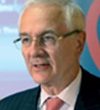Tarcísio Campostrini Borghi Jr., J. Ribamar Costa Jr., Alexandre Abizaid, Daniel Chamié, Mateus Veloso e Silva, Danillo Taiguara, Ricardo Costa, Rodolfo Staico, Fausto Feres, Áurea J. Chaves, Dimytri Siqueira, Amanda G. M. R. Sousa, J. Eduardo Sousa
Modificaciones en la angulación coronaria luego de implante de soporte vascular bioabsorbible y stents de cromo-cobalto y acero inoxidable
Mateus Veloso e Silva, J. Ribamar Costa Jr., Alexandre Abizaid, Rodolfo Staico, Danillo Taiguara, Tarcísio Campostrini Borghi Jr., Ricardo Costa, Daniel Chamié, Amanda G. M. R. Sousa, J. Eduardo Sousa
Scaffold bioabsorbibles. Estado Actual y Proyección
Roberto Botelho2014-12-05 MD, PhD
BVS-STEMI-FIRST OCT study: Bioabsorbable platform in acute myocardial infarction
A bioabsorbable platform implant in the context of ST segment elevation acute myocardial infarction is feasible although the subsequent cicatrization of the artery is not documented. The objective of this work was to evaluate optical coherence tomography (OCT) in patients who received everolimus-releasing bioabsorbable platform in the context of primary angioplasty. A total of 39...
BIOSCIENCE study: Absorbable polymer versus permanent in sirolimus-eluting stents
This multicenter study randomized 1063 patients to receive the sirolimus-eluting stent with absorbable polymer and 1056 patients to permanent polymer stent. No differences in stent thrombosis (3.4% in the group with permanent polymer versus 2.8% in the group with absorbable polymer), target vessel revascularization (6.7% for both) or mortality (2.1% versus 2.9%; p = 0.7)....
EVERBIO II: Bio-absorbable stent Absorb versus everolimus-eluting or biolimus stents
The new generation drug-eluting everolimus or biolimus stents have proved superior to the first generation. However, neo intimal proliferation and late thrombosis remains a problem not yet solved same for all drug-eluting stents. The Absorb (Abbott Vascular, Abbott Park, IL, USA) is the first absorbable vascular support approved for clinical use. The EVERBIO II study...
ABSORB 2: Results at one year of bioabsorbable platform versus Xience
This randomized, controlled, multicenter and blind study compared the second generation of bio-absorbable stent platform with the everolimus-eluting Xience. 501 patients were randomized 2: 1 (Absorb / Xience) with de novo lesions in native coronary arteries with a reference diameter between 2.25 and 3.8 mm estimated by quantitative angiography. All the patients underwent IVUS and...
NOBORI II: Final 5-year results of drug-eluting stent with bio-absorbable polymer
This study evaluated the performance of Nobori biolimus bio-absorbable polymer stent in real-world patients. A total of 3067 consecutive patients followed up to 5 years were included. The rate of target lesion (composite of cardiac death, myocardial infarction and target lesion revascularization) was 3.9% at one year and 5.1% at 2 years. Long-term clinical performance...
DESSOLVE II: 2-year results show the superiority of the sirolimus eluting stent with fast bio -absorbable polymer.
The aim of this study was to evaluate the performance of the sirolimus eluting stent with bio -absorbable polymer (MiStent SES) compared with zotarolimus eluting stent with permanent polymer (Endeavor). This 2:1 randomized, multicenter study included 183 patients with the primary objective of evaluating the late lumen loss between the MiStent and Endeavor a two...
Bioabsorbable devices in congenital heart disease
Breinholt, John (USA)2014-04-25








